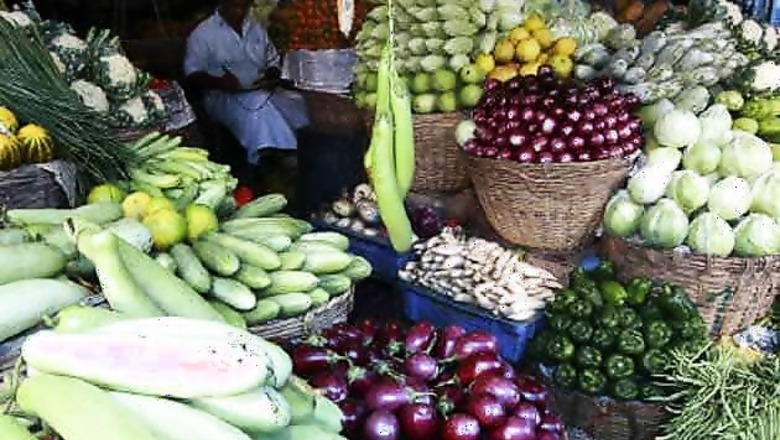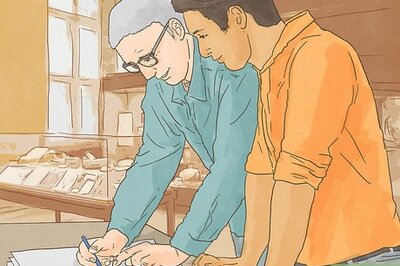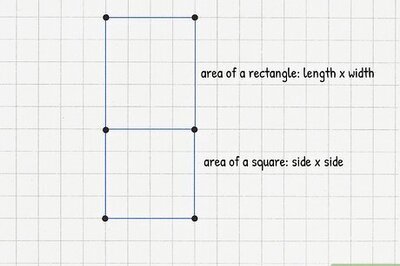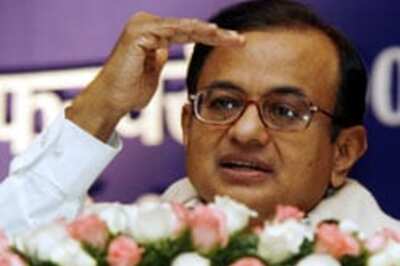
views
New Delhi: India's headline inflation slowed in December to a two-year low as food price pressure eased dramatically, but the RBI is expected to leave interest rates on hold next week as manufactured products inflation edged up from November.
The wholesale price index (WPI), the main inflation gauge, rose 7.47 per cent from a year earlier, slowing from a 9.11 per cent rise in November, roughly in line with the 7.50 per cent increase forecast in a Reuters poll.
Still, the central bank is not expected to begin cutting interest rates at its review on Jan 24, though some traders and economists expect it to cut the cash reserve ratio (CRR), the proportion of deposits that banks must keep as cash with it, in order to ease tight market liquidity.
"From the RBI's perspective, core inflation is still elevated, and so we are not expecting any rate move from the central bank on January 24," said Sonal Varma, economist with Nomura in Mumbai.
The Reserve Bank of India (RBI) left interest rates unchanged last month after raising them 375 basis points since March 2010 to fight inflation, as worries about growth in Asia's third-largest economy moved to centre stage.
The yield on 10-year bonds rose 6 basis points to 8.21 per cent and the benchmark five-year and one-year swap rates climbed 6 bps and 9 bps, respectively after the data.
Traders said the still-high manufacturing inflation had reduced the chance of a CRR cut next week.
December inflation was the lowest since December 2009.
For graphic on inflation, click link.reuters.com/rer95s
India's economic growth is slowing after a prolonged bout of monetary policy tightening that has seen 13 interest rate increases since March 2010, as well as sluggish investment and weak global conditions.
Some analysts expect the economy to struggle to achieve 7 per cent growth for the fiscal year ending in March after it grew 8.5 per cent a year earlier. With little fiscal space for government stimulus, pressure is growing on the central bank to begin easing monetary policy.
While RBI officials have conceded that they are concerned about growth, their public comments suggest that the bank isn't ready to take its foot off the pedal until clear signs emerge that inflation is under control.
Food inflation plunges
Food inflation tumbled to 0.74 per cent in December from 8.54 per cent in November, while fuel inflation was 14.91 per cent compared with 15.48 per cent, the data on Monday showed.
Manufacturing inflation was at 7.41 per cent compared with a reading of 7.7 per cent in the previous month, but was up on a sequential basis from November.
The rupee fell about 16 per cent in 2011, aggravating fuel inflation in a country that imports nearly 80 per cent of its crude requirements.
"The upward exertion by weaker rupee on manufactured products prices is apparent," said Anubhuti Sahay, an economist with Standard Chartered in Mumbai.
The RBI is expected to continue its current practice of buying government bonds in the open market to add cash to the banking system and ease the liquidity crunch, analysts say.
The central bank has bought 695 billion rupees of government debt since late November.
The market has been split on whether or not the RBI will cut the cash reserve ratio at its review next week. While liquidity remains tight, the central bank tends to view CRR primarily as a monetary policy tool.
"I would still think there is a case for CRR cut because of tight liquidity and the scale of liquidity infusion required, but since the RBI has used CRR as a monetary measure, the probability of CRR cut has also reduced after this data," said A. Prasanna, economist at ICICI Primary Securities Dealership.
Other recent data also give the RBI reason to refrain from easing rates just yet. Industrial output recovered in November, posting its fastest growth in five months.
Manufacturing activity surged to a six-month high in December, while services grew at their fastest pace in five months.
Car sales, after falling for four months, rose for a second month in December, climbing 8.5 per cent from the same month a year earlier.



















Comments
0 comment